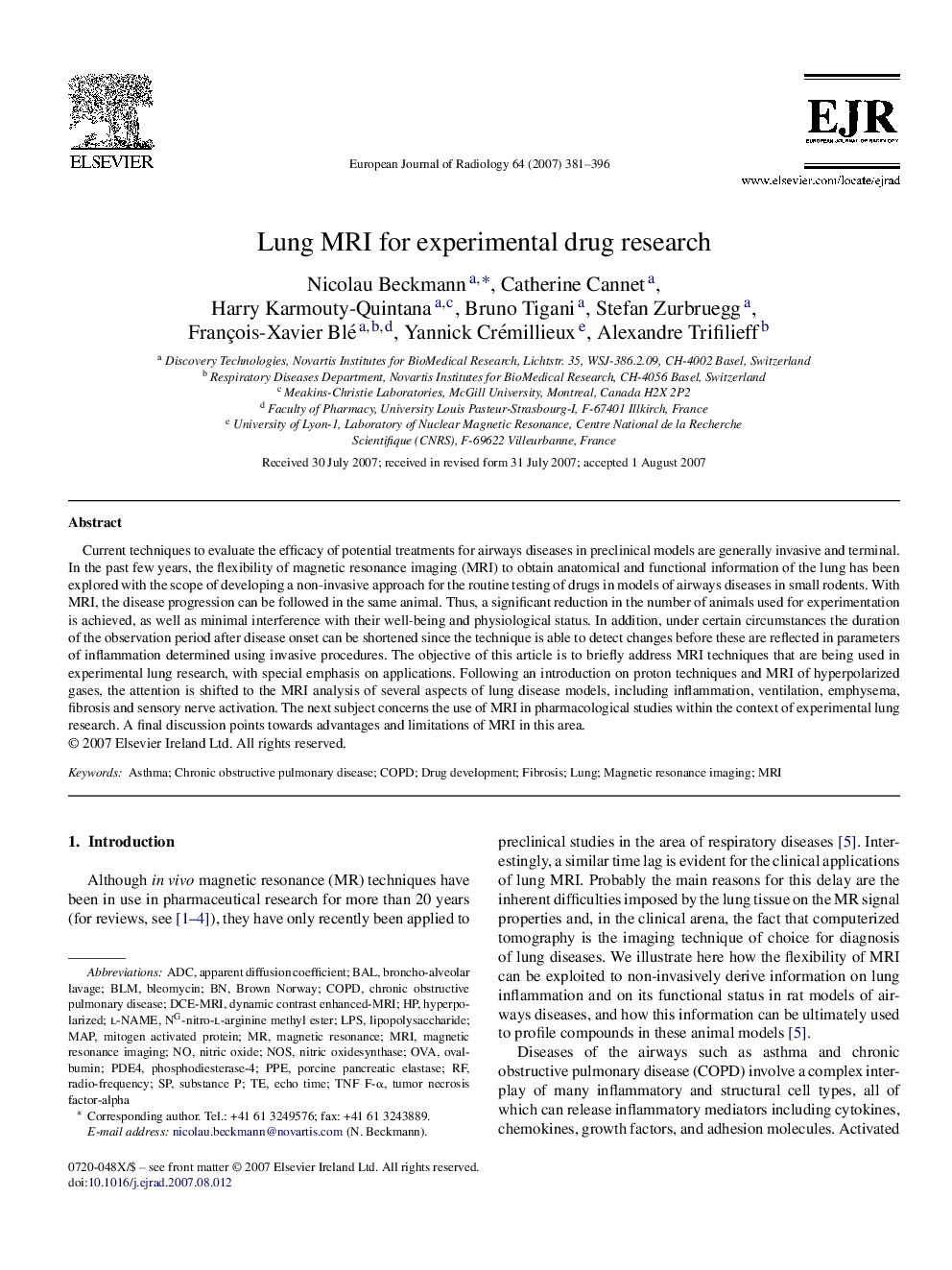| Article ID | Journal | Published Year | Pages | File Type |
|---|---|---|---|---|
| 4227818 | European Journal of Radiology | 2007 | 16 Pages |
Current techniques to evaluate the efficacy of potential treatments for airways diseases in preclinical models are generally invasive and terminal. In the past few years, the flexibility of magnetic resonance imaging (MRI) to obtain anatomical and functional information of the lung has been explored with the scope of developing a non-invasive approach for the routine testing of drugs in models of airways diseases in small rodents. With MRI, the disease progression can be followed in the same animal. Thus, a significant reduction in the number of animals used for experimentation is achieved, as well as minimal interference with their well-being and physiological status. In addition, under certain circumstances the duration of the observation period after disease onset can be shortened since the technique is able to detect changes before these are reflected in parameters of inflammation determined using invasive procedures. The objective of this article is to briefly address MRI techniques that are being used in experimental lung research, with special emphasis on applications. Following an introduction on proton techniques and MRI of hyperpolarized gases, the attention is shifted to the MRI analysis of several aspects of lung disease models, including inflammation, ventilation, emphysema, fibrosis and sensory nerve activation. The next subject concerns the use of MRI in pharmacological studies within the context of experimental lung research. A final discussion points towards advantages and limitations of MRI in this area.
